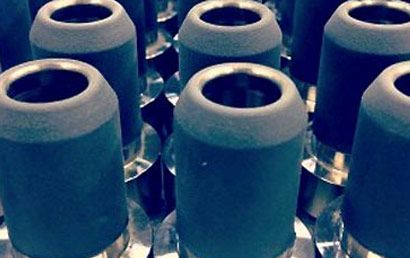Understanding Thermal Management In Automotive Parts
High-temperature resistant coatings and thermal management are necessary for more efficient, cleaner running diesel and automotive engines. Both high-temperature resistance and thermal management can also be used in any number of applications.
Thermal barrier coatings shield alloy and metal parts from temperatures that are exceedingly high. High temperatures can be responsible for increasing a component’s fatigue. But thermal barrier coatings exhibit high wear-resistivity and strength. Much material stress can be lessened or avoided through the proper thermal barrier coating.
Let’s take a closer look at thermal management and protective coatings.
Applications
Some coatings are wear and abrasion resistant and are used for movement that is caused by the flexing of cold and hot metal. Engines, after all, get very hot, but cool down (sometimes abruptly), when not in use.
Here is just a handful of typical applications where protective coatings and thermal management come into play:
- Electrical components that may be influenced by increased temperatures
- Exhaust gaskets
- Exhaust manifolds
- Intake manifolds
Coatings That Provide Thermal Management
Coatings that provide thermal barriers can be applied in a couple of ways – either with a thermal dispersant coating or on their own. What does a thermal barrier coating do? As implied by its name, it reduces or blocks the substrate’s radiating surface temperature. Additionally, they can be put over a dispersant coating.
What is a dispersant coating? These coatings help transfer heat. The heat is put forth by a high temperature, isolated region of a particular component throughout the substrate’s surface. This heat must be reduced, which is what these coatings help accomplish. But they also heighten a thermal barrier coating’s functionality when used together.
How much difference do these coatings make? In certain applications, it has been reported that a 15 to 20% decrease in the surface temperature of a component has been the result.
Diesel And Automotive Specs
Strict standards are applied to OEMs. This is why it is vital that industries use trusted, experienced thermal spray companies to apply coatings to diesel or automotive specifications. Applications must meet all requirements for their particular specs.A&A Coatings has been the trusted go-to thermal spray company for many a business for more than 70 years. We are leaders in the thermal spray and protective coating industry.
Coatings That Are High-Temperature Resistant
In this day and age, there are any number of high-temperature resistant coatings. But these coatings are different from thermal management coatings. High-temperature resistant coatings are not expected to fight off high heat. They are merely used to assist in the maintaining of functionality in environments where high heat is a factor.
A specific industry’s particular circumstances will help to determine the type of coating that is appropriate. Various reasons for protective coatings, in addition to dealing with high temperatures, can be protecting a component from corrosion or the providingof lubrication to protect against abrasion.
If you would like to find out more about dispersant coatings, thermal barriers, and other protective coatings, contact A&A Coatings today. We offer a full line of protective thermal spray coatings for all applications. We have the ideal protective coating for your situation, whatever industry you are in.



